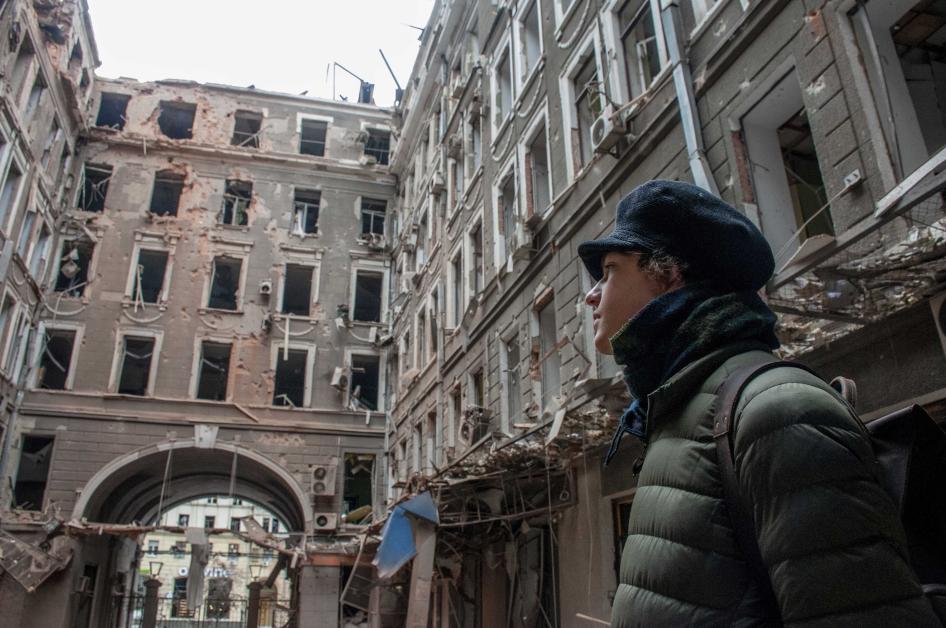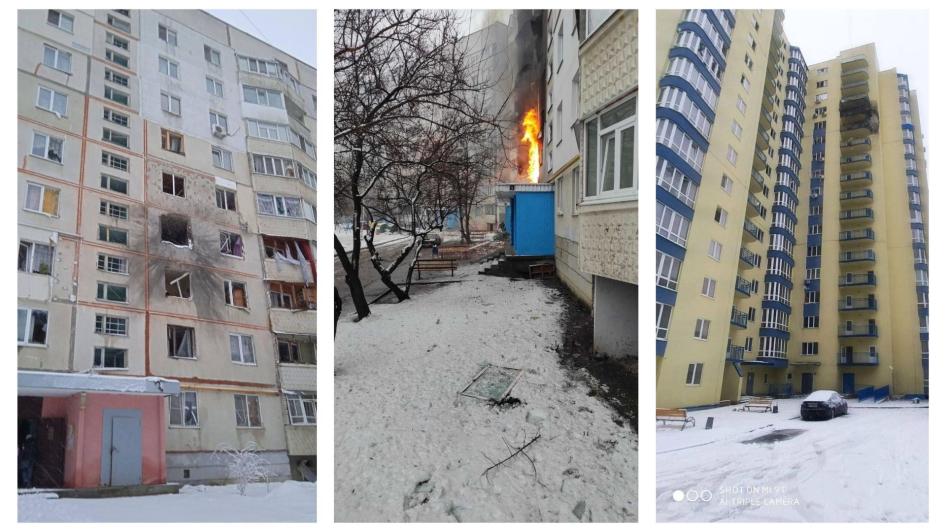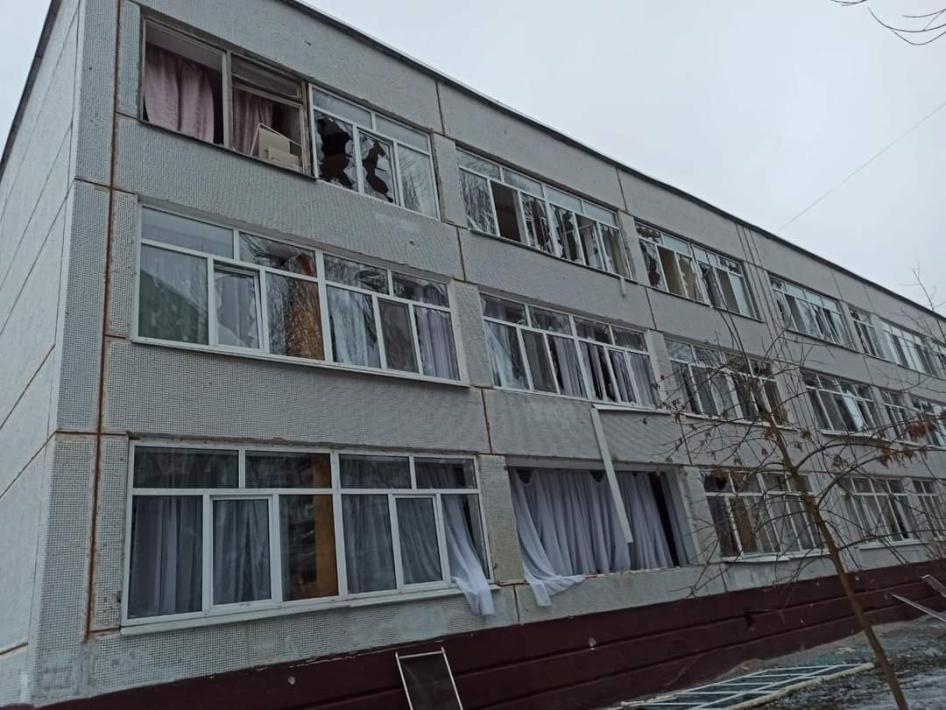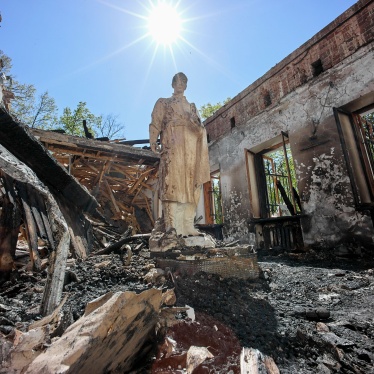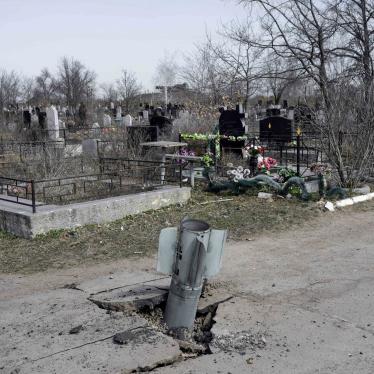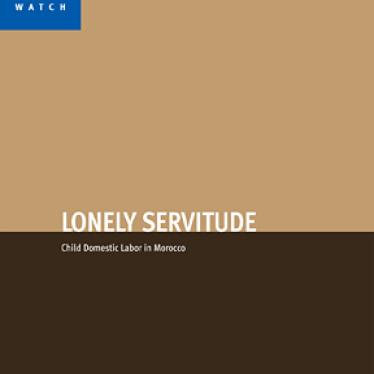(Lviv) – More than 450 civilians were reportedly killed or injured in the first 11 days of the war, in Kharkiv, Ukraine’s second largest city, as a result of Russian airstrikes and artillery shelling of populated areas, Human Rights Watch said today. The attacks damaged civilian buildings, including apartment blocks, schools, places of worship, and shops, impeding access to food and medicines. They also damaged infrastructure in the city causing civilians to lose vital services such as electricity, heat, and water.
Human Rights Watch identified Russian use of cluster munitions and explosive weapons with wide-area effect in heavily populated areas in Kharkiv, in apparent indiscriminate and disproportionate attacks. Indiscriminate shelling in heavily populated areas violates international humanitarian law and may constitute a war crime.
“In Kharkiv, Russian military forces showed disregard for civilian lives through repeated apparent indiscriminate attacks in populated areas” said Hugh Williamson, Europe and Central Asia director at Human Rights Watch. “Russia’s military may believe they can disregard the laws of war in their assault on Kharkiv, but the International Criminal Court has jurisdiction over war crimes committed in Kharkiv and there will be accountability for those responsible.”
According to Kharkiv regional police, between February 24 and March 7, 2022, a total of 133 civilians were killed, 5 of them children, and 319 civilians were wounded. One of the attacks Human Rights Watch documented killed a man as he was waiting in line outside a supermarket; another killed two people who had apparently just emerged from a shelter to get water.
A spokesperson for the Kharkiv mayor’s office told Human Rights Watch that as of March 4, approximately 500,000 people remained in the city, from a pre-war population of 1.8 million.
“People are leaving Kharkiv ‘empty,’” a resident told Human Rights Watch. “They don’t pack bags or take their things. They grab their documents and each other and they flee.” Those who remain have endured intermittent heat at best, as outside temperatures have ranged between 2 and -4 Celsius, as well as shortages of food, water, and essential medicines.
Yuri Sydorenka, the head of the External Affairs Department of Kharkiv’s mayor’s office, said that as of March 3 the city was experiencing major medicine shortages: “So far, we have some ways to get medication in, but we need more.” On March 7 the deputy head of the Health Ministry’s Kharkiv office, Zhanna Strogaya, told Human Rights Watch that at least 14 healthcare facilities had been damaged, 9 of them seriously.
Human Rights Watch interviewed 29 people, including Kharkiv residents, medical workers, volunteers assisting with evacuation, and municipal officials, about the attacks. Human Rights Watch verified and analyzed 29 videos and 41 photographs posted on Telegram, Twitter, Facebook, or TikTok, and another 2 videos and 18 photographs sent directly to researchers to corroborate witness testimony and to identify additional impact sites and damage.
The attacks Human Rights Watch documented took place between February 24 and March 5. They damaged or destroyed residential buildings, schools, market stalls, churches, stores, hospitals, university departments, and other civilian infrastructure throughout the city. The Ukrainian human rights group Truth Hounds also documented many of these attacks.
“Our city center is being erased,” one Kharkiv resident told Human Rights Watch.
Sydorenka, said that on March 2 alone, Russian shelling killed 34 people and injured 285. Ten of the injured are children. He also said that the attacks damaged hundreds of apartment buildings and disrupted the city’s water and power supply, leaving about 300 apartment buildings without electricity.
A 45-year-old woman who was living in Kharkiv’s southeast Industrialny district, on March 2 said, “Where I live, there is no internet, no hot water, we had no heating for several days. I only have the food I bought before the crisis started. Everything is closed, there is no bread.”
Several people said that the basements, underground parking lots, and other facilities used as bomb shelters were freezing cold, and when sheltering in them, civilians had little access to basic needs such as food and water. A man from Saltivka, a large residential area in Kharkiv’s northeast, said that his family spent six nights in an unheated basement in sub-zero temperature, with little food and water. “It was so cold that I started having seizures,” he said. “The stores are running low on food and water, you can still buy Coca-Cola but that’s about it.”
Many people also shared their fears that their apartment building infrastructure was not safe. “There are water pipes in our basements and there is a danger that a water pipe might burst,” one woman said. Another said that she did not take shelter in the basement, because she was worried that the building would collapse and they would be “buried under the rubble.” “It is safer in the flat,” she said. She and her four-year-old son were taking shelter in the bathroom on the fourth floor of her apartment building.
Dozens of educational facilities, including schools and preschools, were damaged or destroyed in the first week of the war, Sydorenka said. Human Rights Watch documented damage to eight schools and two university departments.
Under international humanitarian law parties to an armed conflict have obligations to distinguish at all times between civilians and combatants, between civilian objects and military objectives, and to take precautions to protect civilians and other non-combatants from the hazards of war. Failure to observe the principle of distinction, in particular by directing an attack against civilians or civilian objects or conducting indiscriminate or disproportionate attacks, constitutes a war crime when committed deliberately or recklessly. Unlawful and wanton excessive destruction of property that is not militarily justified, is also a war crime.
Human Rights Watch was not able to conduct on-site visits in Kharkiv and used interviews with witnesses and images from the damage to try to identify the types of weapons Russian forces used in the attacks documented. This analysis demonstrates that in addition to cluster munitions, Russian forces used explosive weapons with wide-area effect.
The use of explosive weapons with wide-area effect in populated areas heightens the likelihood of unlawful, indiscriminate, and disproportionate attacks. These weapons have a large destructive radius, are inherently inaccurate, or deliver multiple munitions at the same time. Long-term effects of their use include damage to civilian buildings and critical infrastructure, interference with services such as health care and education, and displacement of the local population. Russia and Ukraine should avoid using explosive weapons in populated areas. Every country, including Russia and Ukraine, should support a strong political declaration that includes a commitment to avoid the use of explosive weapons with wide-area effect in populated areas.
Russian and Ukrainian forces should make all efforts to ensure that adequate supplies and humanitarian assistance are able to reach civilians in and around Kharkiv, and every country, and intergovernmental organizations should press both parties to abide by their international humanitarian law obligations and ensure access for humanitarian assistance and safe passage for civilian evacuations. The parties should allow access to neutral and independent humanitarian aid providers so they can offer support to vulnerable civilians who may need assistance to leave, including people with disabilities, older people, pregnant people, children, and people with chronic or severe medical conditions. If an agreement to establish humanitarian corridors is reached and put into effect, the parties should not breach that agreement in any way that places civilians at risk.
The International Criminal Court has opened an investigation into the situation in Ukraine. The extensive civilian losses and damage in Kharkiv underline the importance of the court’s scrutiny on the lawfulness of the attacks on the city. The Commission of Inquiry established on March 4 by the United Nations Human Rights Council in Geneva should also investigate alleged unlawful attacks in Kharkiv.
“Our assessment points to multiple indiscriminate attacks in the first 11 days of hostilities in Kharkiv, and media reports indicate that Russia has carried out further indiscriminate attacks harming civilians as fighting continues in Kharkiv and elsewhere,” Williamson said. “Russia should immediately abide by its obligations to avoid and minimize civilian harm, and not lose sight of the fact that multiple international investigations are underway to hold those who don’t meet their obligations to account.”
For detailed findings about the attacks and more detail about the laws of war, please see below.
Methodology
Human Rights watch interviewed 7 people in person in Lviv and 22 by telephone. Some people asked to be identified only by their first names or by pseudonyms for their protection.
Human Rights Watch identified the location of the videos and photographs it reviewed by matching geographic details with satellite imagery and Google Street View. The approximate date and time of the attacks are based on the accounts of those interviewed and the date and time of content uploaded to social media. Human Rights Watch did not use optical resolution satellite imagery to confirm the date of the analysis due to the extensive cloud cover over Kharkiv from February 28 to March 5. The lack of satellite imagery meant that Human Rights Watch could not, in most instances, clearly identify potential military targets that may have been in the vicinity of the affected civilian areas. Human Rights Watch consulted an open-source online map to locate areas labeled as belonging to the Ukrainian military in Kharkiv. A 500-meter radius was drawn around each facility on the map and checked for its proximity to the location of each incident documented.
An interactive map shows the locations of the attacks documented.
Kyivsky District, Central Kharkiv
On March 4 Elena, a scientist and resident of the Kyivsky district in central Kharkiv, spoke to Human Rights Watch by phone. She said she had left her apartment at Myronosytska Street 46 due to heavy shelling in the neighborhood. “I don’t know if my building is still standing,” she said. “Last time I saw it, all the windows were blown out and the gas was turned off.”
This part of central Kharkiv was subject to intense shelling over the first week of the war. Several incidents of this shelling are described below.
March 1
Two Kharkiv residents described an attack they witnessed on the morning of March 1 near an ATB supermarket in central Kharkiv, which killed a civilian.
Gleb, 25, said: “I saw a large line of people outside… people were trying to buy bread and water. Something exploded and one man in the line was hit. They took the man inside the supermarket. There was a lot of blood and the ambulance came.”
Alexey said that he was standing in line when he heard a loud explosion, “I was near the entrance to the supermarket waiting to go in when the explosion happened. I saw a flash and heard the sound. It was like a snap. I don’t know if they both happened at the same time, maybe a few seconds apart. After that the staff opened the doors so we could seek refuge inside.
“I rushed in and then this man was brought in. He had been standing only a few meters behind me in the line. I saw some people carry him in and put him down on the floor. He was a young guy. They called the ambulance... I didn’t see the wound, [but saw] a pool of blood next to his head and they had laid him down on his stomach. He was still alive but breathing heavily. The ambulance came quickly. They picked him up and took him away... Later we learned from the news that he was an Indian student and died in the intensive care unit.”
Indian officials confirmed that a fourth-year Indian medical student was killed in Kharkiv while standing in line to buy food.
Human Rights Watch examined the area around the ATB-market on an open-source on-line map and identified a building labelled as a military recruiting office 250 meters east of where the attack took place. None of the witnesses identified other potential military targets in the area at the time of the attack. The absence of any other such targets indicates this was an apparent indiscriminate attack.
March 2
On March 2, there was an attack that appeared to have been directed at the Office of the State Security Service (SBU), at Myronosytska Street 2, which is a military target. The shelling also caused extensive damage to civilian buildings in the vicinity, including the top floor of the economics department of V. N. Karazin Kharkiv National University, located opposite the SBU offices. In a video posted to Telegram on March 2, a fire rages as large sections of the roof fall to the ground.
Another attack on March 2 in Kyivsky district, documented by Truth Hounds, the Ukrainian human rights monitoring group, occurred two blocks north at Myronosytska Street 32. A video posted on Telegram on March 2 shows the upper floors of this and at least two other multi-story buildings nearby suffered significant damage as a result of shelling.
Ihor Gromov, a taxi driver from Kharkiv interviewed by Human Rights Watch in Lviv after he had evacuated, confirmed that the five-story building at Myronosytska Street 32 was severely damaged and burned in a March 2 attack. He also said that a section of the roof of his own neighboring building, at Myronosytska Street 34, was damaged in that attack.
Gromov was out shopping at the time of the attack and said that he returned to find that two of his neighbors had been injured. “The first thing I saw when I rushed upstairs was the guy who lives above me on the 5th floor – his body was pierced with glass shards. I took off my shirt to try to stop the bleeding. I told him to go out, to the ambulance. His neck and chest were bleeding a lot.” Gromov said that the other person, a man also living on the fifth floor, was crushed under slabs of concrete but was able to get out.
Gromov said that he did not see potential military targets in the area at the time of the attack. The absence of military targets in the immediate vicinity at the time of the attack would indicate this was an apparent indiscriminate attack.
Saltivka Neighborhood, Kyivsky District
In a telephone interview on March 2, “Oxana” said on the previous day a shell had hit her four-story building with about 100 apartments at Krychevskoho Street 42, in the northern Saltivka neighborhood of Kyivsky district, entering through the window of the top floor of the building. She said many other buildings in her neighborhood had also been hit. She was speaking from her parents’ 12-story apartment building, just minutes on foot from her own, close to Horianska Street.
In a subsequent interview, she said that at about 2 p.m. on March 2, a munition had hit the 10th floor of her parents’ building, setting it on fire.
Oxana said she was on the third floor when the munition hit and was not harmed, but that it took four hours for firefighters to extinguish the flames. At the time of the attack, she said, more than a dozen people were in the building, including at least one family on the 12th floor. She did not know whether the family was harmed. She said that a military weapons cache, several kilometers away from the populated residential neighborhood, had been hit in the days before March 2, and she was not aware of other potential military targets in the area.
Two videos and a photograph posted on Twitter and Telegram on March 1 show damage to a seven-story apartment building at Krychevskoho Street, 29, 100 meters from the building Oxana was in. A munition appears to have hit the fourth and fifth floors. The windows of other nearby apartment buildings are also damaged, as are at least two vehicles.
The apparent absence of military targets near Krychevskoho Street 29 and 42 when the attacks took place indicates these were seemingly indiscriminate attacks.
Just over three kilometers from Krychevskoho Street, the top floors on the southeast side of a high-rise apartment building next to Studentska metro station were hit, as seen in a photograph posted to Twitter on March 2. The impact sites bear the hallmarks of artillery shelling.
Schools and a Church Damaged in Kyivsky District on February 27 and March 2
Human Rights Watch documented attacks that hit two schools in Kyivsky district; Specialized School No. 134 and Specialized School No. 17.
Three videos and two photographs posted on Twitter, TikTok, and Facebook show extensive damage to Specialized School No.134, on Shevchenka Street. A video filmed from a distance and posted on February 27 on Telegram shows School 134 on fire. Another video posted to TikTok on February 28 shows extensive damage to the interior and exterior of the same school building.
A video posted to Facebook on March 2 shows a hole in the wall of a second-floor classroom of Specialized School No.17 created by a shell fired from the north. A photograph posted to Telegram, also on March 2, from inside the classroom shows desks and chairs strewn across the room with a large hole in the exterior wall.
At least one church in Kyivsky district was damaged in attacks on March 2.
Four photographs posted to Facebook by the Kharkiv diocese account on March 2 show damage to the Church of the Holy Myrrh-Bearing Women, which was less than 100 meters from the SBU building and the economics department on Myronosytska Street. The photographs reveal damage to the interior, with the windows blown out and damaged holy objects.
Saltivka Neighborhood, Moskovskyi District
Serhii, 25, said in a March 3 phone interview that the shelling of his neighborhood in Moskovskyi district, also known as Saltivka, was so intense that he, his wife, and mother-in-law had been sheltering in a basement for seven days in the freezing cold, mostly without electricity or drinking water. Approximately 100 other people were with them. “It’s been so cold in the basement that I started having seizures,” he said. “Yesterday, I went out for the first time to get some warm clothes. It is only a three-minute walk from the basement where we’ve been hiding. As I walked back, there were explosions all around me and I kept on walking, knowing that I could get hit at any second. I walked past our playground and saw a… rocket sticking out of the ground.” Serhii said that after he returned to the basement, the sounds of explosions outside intensified.
Human Rights Watch analyzed four videos and one photograph posted to Telegram on March 1 that show three damaged apartment buildings on Druzhby Narodiv Street in the neighborhood Serhii was speaking from. One of these videos shows a resident pointing to an impact site on the top floor of an 11-story building as they pack a car with water bottles and belongings. Two other nearby apartments were hit, and fire and smoke are seen rising from the sites.
On March 4 and 5 Saltivka neighborhood came under more intense attacks. Serhii said that on the morning of March 5, he saw several rockets hit three residential buildings in his district. One was a 16-story building at Rodnikovaya 9 and the two other buildings were next to it. He shared with Human Rights Watch three photographs of the burning and damaged residential buildings. Rodnikovaya 9 is approximately 500 meters from the apartment buildings on Druzhby Narodiv Street damaged in earlier strikes.
The absence of military targets in the areas at the time of the attacks indicates that these were apparent indiscriminate attacks.
Shevchenkivskyi District, Northern Kharkiv, February 28-March 1
Strike on 23 Sepnya Street
An attack on 23 Sepnya Street, on February 28 using cluster munitions killed several civilians who had reportedly come out of their shelter to collect water. Two videos posted to Telegram on February 28 show at least three bodies on the ground. Two bodies are directly outside a water dispenser with large water bottles nearby at 23. Human Rights Watch documented this attack in its reporting on the use of cluster munitions in Kharkiv on February 28.
Strike at Akhsarova Street
Tatyana, 42, a mother of 2 boys, ages 8 and 10, said that a rocket landed that morning near School No. 150 on Akhsarova St, 3а, in Shevchenkivskyi district. Her children attended the school before the hostilities broke out, and she said she saw the damage when she was forced to leave her own apartment because, “Our building was on fire and we had to go to the shelter.” Human Rights Watch analyzed a video posted to Telegram on March 1, showing parts of the west side of the school’s exterior and its surroundings. The school’s windows had been blown out, as were those of an apartment block approximately 40 meters west. The walls of the apartment block, a shed, and a tree are also visibly damaged.
Strike at 55 Sumskaya Street
On March 1, an artillery attack damaged a boarding school for children who are blind, at Sumskaya Street 55. Human Rights Watch documented this attack on March 7.
Human Rights Watch analyzed a video posted to Telegram on March 2 that shows the outside of the school and nearby street. All of the school’s windows visible in the video have been blown out. The video pans to film south on Sumskaya Street. Debris from the buildings lie in the street. At least two multi-story residential and commercial buildings have been damaged, one on each side of the street, approximately 25 meters from the school. In another video posted to Facebook on March 4, recorded from a moving car, the extent of the damage is more visible. At least six buildings with shops on the first floor and housing on the other floors are extensively damaged. A photograph posted on Facebook on March 3 clearly shows extensive damage to the two top floors of a residential and commercial building approximately 50 meters south of the school.
An open-source online map shows an area labelled as belonging to the Kozhedub Air Force University, and additional building compounds approximately one kilometer from the attacks on Sumskaya Street. Human Rights Watch has no information on any attacks directed at the Air Force University compound.
The one-kilometer distance between the potential military target and the civilian objects extensively damaged in the attacks indicates a failure to take all feasible precautions to avoid civilian harm or to respect the principle of proportionality and suggests an apparent indiscriminate attack.
University Building and a Church Hit
Human Rights Watch spoke on March 3 to a student of V. N. Karazin Kharkiv National University, Ada, who said that shelling significantly damaged one of the university’s physics and technology buildings on Akademika Kurchatova Street.
Airstrikes also hit the city council building and Sviato-Uspensky Ukrainian Orthodox Church on Universytets'ka Street. Human Rights Watch analyzed 15 photographs posted to Facebook by the Kharkiv diocese account on March 2. They show the impact on the church interior, including shattered windows and damaged holy objects. One image, with a partial view out of the window, shows debris in the street east of the church.
Kholodnohirskyi District, Western Kharkiv
Iryna Agoyeva, 45, and her 21-year-old daughter Sofia said the apartment building at Kholodnohirska 3, where her 72-year-old female relative lived, was severely damaged in an attack on March 2 and that they saw that the upper part of her building had collapsed, “[She] lives on the fourth floor… and she was hiding in the bathroom with all of her documents.”
Agoyeva said that relatives tried repeatedly to call the woman on March 2 but that she didn’t answer and that as of March 3 they had been unable to find her. The damage to the building’s top three floors was shown in a video posted to Telegram on March 2. The video also shows at least five destroyed stalls at the Kazka market, on the corner of Kholodnohirska and Poltavskyi Shliakh streets.
Kholodnohirska 3 is one kilometer northeast of the Cadet Corps State Gymnasium for Intensive Physical Training, at Poltavskyi Shliakh St. 1, a military target that was shelled on March 2.
School Damaged on February 28 - March 1
On the night of February 28 or early morning of March 1, a Grad rocket attack hit the grounds of School No.108. A video posted to Telegram on March 1 shows smoke rising from the location of the strike and a rescue worker near the impact site. At 6:47 a.m. on March 1, three photographs were posted to Telegram showing rescue workers using hoses to extinguish a large fire near the impact site. Another video posted to Telegram on March 1 captures damage to the school’s fence, recreation yard, and windows.
A video posted to Telegram on March 3 shows the remnants of a 122-millimeter Grad rocket in the parking lot outside the school, and at least four destroyed cars. Damage to the facades of residential buildings nearby is also visible.
School No. 108 is approximately 1.5 kilometers north of the Cadet Corps building.
The distance of one-to-1.5 kilometers between a military target and the civilian objects extensively damaged, indicates a failure to take all feasible precautions to avoid civilian harm or to respect the principle of proportionality and suggests an apparent indiscriminate attack.
Industrialnyi District, Southeastern Kharkiv
Olexandra fled Kharkiv on February 27 with her son, 11, on a train to Lviv via Kyiv. Olexandra said that on March 1 a blast wave from an explosion damaged her apartment building on Sharikova Street. She showed a Human Rights Watch researcher a video and two photographs taken from the outside that show her damaged balcony, and damage to another building on nearby Ivana Karacha Street.
Xenya, 45, who lives on Ivana Karacha Street with her 2 children, ages 13 and 4, described an attack on March 1 that damaged her apartment building, another apartment building at Plitochnaya Street 19a, and two schools: School No.75 and Boarding School No. 11. “All of this happened in one wave – boom, boom, boom, boom. My neighbors are pensioners, and all their windows broke… The fence around School No. 75 melted.”
Human Rights Watch analyzed a video posted to Telegram on March 2 that shows a crater outside the main entrance to School No. 75. The walls of the school are pockmarked by shrapnel and the windows of the three-story building are damaged. In a photograph and video posted on Telegram, taken approximately 350 meters north of School No.75, a crater is visible approximately 20 meters outside Boarding School No 11. The building has visible damage to its windows.
The building of a third school, Secondary School No. 118, was also damaged. A video and photograph, posted in the morning of March 2 to Telegram, shows damage to the west building of the school. The windows have been blown out and a burn mark is visible on the façade.
“Anna,” an environmental activist who lives in a development in the Vostochny neighborhood of Industrialnyi district, said in an interview that several houses in the neighborhood had completely burned down after aerial strikes on February 26 and 27. “Our basement is not suitable so myself, my parents, my brother and my 85-year-old grandmother stayed in the house. We could see bright flashes and the entire house was trembling. Last night [March 2] we heard gunfire outside.”
Zhovtnevy District
Two videos and nine photographs posted to Twitter and Telegram on March 1 show extensive damage to an apartment building at Novo-Bavarskyj Av. 95 and at least five bodies of civilians. The building was approximately 130 meters from City Hospital Clinic No. 3.
International Humanitarian Law
The laws of war require the parties to a conflict to take constant care during military operations to spare the civilian population and to “take all feasible precautions” to avoid or minimize civilian harm and damage to civilian objects. These precautions include doing everything feasible to verify that the objects of attack are military objectives and not civilians or civilian objects and giving “effective advance warning” to civilians when circumstances permit.
The laws of war prohibit attacks directed at civilians or civilian objects, indiscriminate attacks, attacks that have disproportionate effects on civilians, as well as extensive destruction of property, not justified by military necessity and carried out unlawfully and wantonly. The International Criminal Court has jurisdiction in Ukraine to prosecute such attacks or destruction as war crimes. Previous war crimes tribunals have held that a single act, if significant in scope such as the destruction of a hospital, may suffice to constitute the offense of unlawful and wanton destruction.
Under the laws of war, civilian objects are any that are not military. Military objectives are only those that by their nature, location, purpose, or use make an effective contribution to military action and whose partial or total destruction, capture, or neutralization, in the circumstances ruling at the time, offers a definite military advantage.
Ukrainian authorities are required under international humanitarian law, as far as feasible, to take “necessary precautions to protect the civilian population, individual civilians and civilian objects under their control against the dangers resulting from military operations.” To this end they should take all feasible measures to ensure that civilians have access to appropriate spaces to shelter safely during hostilities and provide as much guidance and advice as possible to civilians on options and means for safe shelter.
Attacks that damage schools in Ukraine are a devastating blow in a country where conflict over the past eight years has already been detrimental to education. According to UNICEF at least 750 schools have been damaged or destroyed in eastern Ukraine since the conflict began in 2014. Russia has yet to endorse the Safe Schools Declaration, which Ukraine endorsed in November 2019, but both parties have obligations to respect and protect the civilian nature of schools, students, and education personnel. Under the International Criminal Court's statute, it is a war crime to intentionally direct attacks against buildings dedicated to education. Russia should refrain from committing attacks that cause harm to students, educational staff, and institutions.
Both Russia and Ukraine have obligations to ensure access for humanitarian assistance to civilians and to take all feasible steps to allow civilians who want to, to evacuate safely, whether an agreement to establish humanitarian corridors is put into effect or not. Ukraine, and Russia in the areas that it exercises effective control over or occupies, should ensure that there is adequate supply of food, water, and medicine, and that services vital for the civilian population continue.
Russian and Ukrainian forces should facilitate organized evacuations of civilians in and around Kharkiv who want to leave. All parties must abide by their obligations not to carry out attacks that would target or cause indiscriminate or disproportionate harm to civilians while they are leaving, including along railway and road routes.
